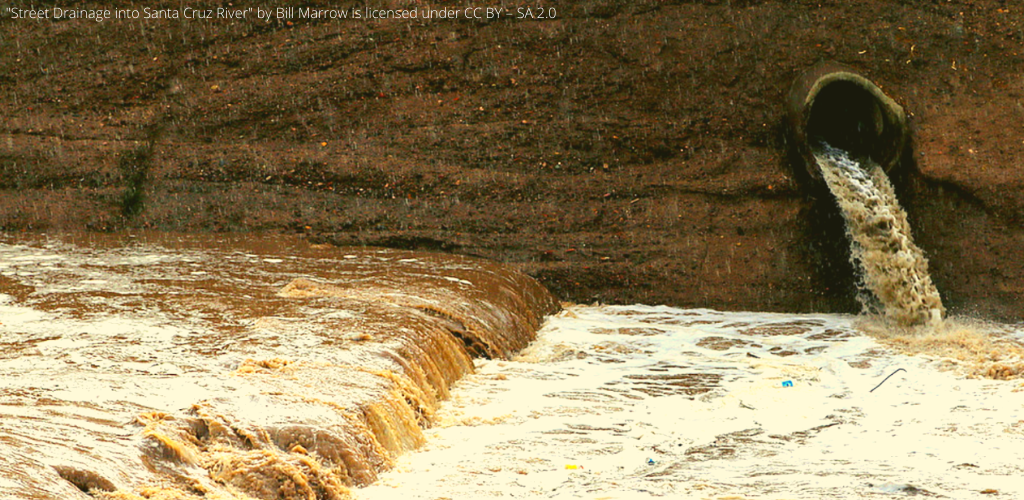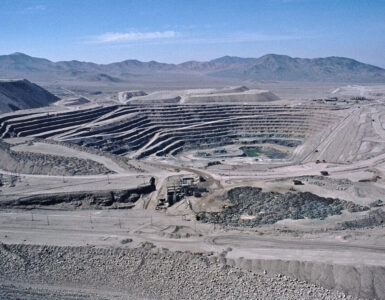A plan to repair aging infrastructure that dumped millions of gallons of untreated wastewater into the Santa Cruz River — impacting Nogales on both sides of the border — has been approved.
It is one of the efforts taken in the past several years to clean up portions of the river and aid local economies. Water recreation activities alone pump almost $189 million annually into the region, according to the Audubon Society.
For years, the seeping sewage was one of the least-known “environmental train wrecks” in the Southwest, said in an article last week on the Arizona Department of Water Resources website that details the agreement.
Periodically, the decrepit, over-taxed International Outfall Interceptor (IOI), which is a part of a sewer system serving the towns of Nogales on both sides of the U.S.-Mexico border, would fail, often resulting in untreated wastewater getting dumped into the Nogales Wash, an important tributary to the Santa Cruz River.
Over the years, environmental officials have warned residents and businesses about using or swimming in the water.
A disastrous spill following a fierce summer storm in July 2017 caused Governor Doug Ducey to declare an emergency and call on the U.S. Corps of Engineers for assistance.
A major win for Arizona
Last week, the Arizona Department of Environmental Quality (ADEQ) and the U.S. section of the International Boundary and Water Commission (USIBWC) announced they have entered into a settlement agreement to set forth a comprehensive plan to mitigate future discharges.
Gov. Ducey hailed the agreement as “a major win for Southern Arizona, helping resolve a decades-old issue that threatened the health and safety of residents.”
Treated water from the Nogales International Wastewater Treatment Plant supplies water for drinking, ranching, farming and other activities critical to the Arizona economy, Ducey stated when the agreement was announced. The river sustains habitats critical to migratory birds, bobcat, deer, javelina and other species. It also is one of the main water supply sources for Nogales, Arizona and Nogales, Sonora, Mexico.
“Working together, ADEQ and USIBWC have developed a plan that will upgrade this critical infrastructure, reduce hazards from storms and flooding and protect people and businesses in this border community,” Ducey said in a statement.
Settlement agreement to repair
The agreement calls for $38,790,000 in funding to reinforce the aged IOI from the U.S.-Mexico border to the treatment plant located in Rio Rico about 9 miles north of Nogales.
The agreement and path forward include:
- USIBWC is investing $34.2 million of existing funds to immediately begin upgrading the IOI.
- USIBWC has finalized engineering plans and in cooperation with state and local officials and begun negotiating agreements necessary to access the IOI from various locations along its length. USIBWC will put the construction contract out to bid in the fall.
- Arizona is supporting the project with $2.59 million.
- Additional support from other partners includes $1 million from Freeport McMoRan Foundation, and $1 million from the U.S. Environmental Protection Agency for a companion project to work on Nogales, Arizona sewer pipelines that connect to the IOI.
- ADEQ is currently working to find funds to install a metal screen in the IOI near the border to capture large debris that could otherwise cause sewage spills, estimated at $2.6-$3.3 million to install, and $360,000 for yearly maintenance.
- USIBWC is negotiating with the Mexican Section of the IBWC to secure Mexico’s cost participation in the pipeline rehabilitation.
Years-long efforts help reduce toxic levels
A report by the Sonoran Institute in Tucson compared the conditions along the Santa Cruz River from the Nogales Wash to Amado in 2018 and 2008 found several favorable developments, including the fact that ammonia concentrations are no longer toxic, the aquifer is receiving better recharge, bringing back fish species including an endangered fish.
According to the report, A Living River, the Santa Cruz River in the region is now ‘alive and significantly healthier.’
One of the main reasons was a $64 million upgrade in 2009 to the Nogales International Wastewater Treatment Plant, sending cleaner effluent into the north-flowing Santa Cruz River.
Santa Cruz River important to the regional economy.
The ongoing effort to clean up the river is important to the economy of Santa Cruz County, which has the highest poverty rate in Southern Arizona, according to U.S. Census data.
Recreation along the rivers and waterways in the county supports 1,600 local jobs and contributes $189 million annually to local economies, according to the Audubon Society.
All-out effort by Arizona state and federal leaders
The settlement agreement came out of a 2012 suit filed by ADEQ that alleged federal Clean Water Act violations. To establish a path forward for the infrastructure upgrades, ADEQ and USIBWC entered into settlement discussions in 2018.
“Reaching this agreement ushers in a new era of partnership and problem solving among local, state, federal and international government entities,” ADEQ Director Misael Cabrera said in an announcement. “While there is still work to do, this settlement supports the necessary rehabilitation of critical infrastructure at the border to prevent ongoing catastrophic failures, and protect public health and the environment.”
The final outcome resulted from an effort by state and federal leaders in Arizona including:
-Arizona Congressional members Sen. Kyrsten Sinema, Sen. Martha McSally, Rep. Raul M. Grijalva and Ann Kirkpatrick
-Arizona state legislators Sen. Frank Pratt, Rep. Gail Griffin and Rep. Rosanna Gabaldon
-Santa Cruz County Supervisor Bruce Bracker
-Arizona-Mexico Commission Vice Chair Juan Ciscomani
-Arizona Department of Water Resources Director Thomas Buschatzke
-Office of Arizona Attorney General Mark Brnovich
















Add comment